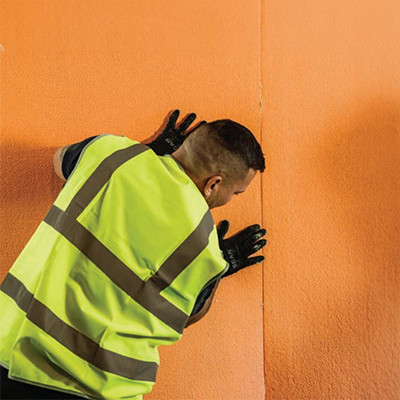Our Damp Specialists Can Resolve Any Damp Problem
Damp problems that arise in a property are caused by water ingress which leads to a building’s material biodegrading. This can lead to serious damp problems for a property which is why it’s fundamental to the preservation and maintenance of all buildings that they remain as watertight as possible.
Any defect permitting access of moisture into the fabric of a building must be remedied or treated to prevent further entry of water, and the area affected by water dried out. In order to identify defects that can lead to water ingress and to identify areas within the building that are at risk of damp problems like fungal decay, a detailed inspection should be undertaken by a competent specialist who will carry out an external and internal investigation of the property.
Damp Problems – External Investigation
- Deterioration of mortar in brickwork joints.
- Faulty or missing damp proof course.
- Bridging over the damp proof course by soil in flower beds, plinths, etc.
- Blocked air-bricks.
- Cracked or broken pipes, both water-pipes and waste pipes.
- Faulty flashing around window frames (throats to sills).
- Continued overflow from cisterns or water tanks.
(Ivy or other climbing plants may hide many of the above faults and roots may undermine foundations causing breaks in damp courses. Roots of nearby trees may cause similar damage to foundations and damp-courses).


Damp Problems – Internal Investigation
- Solid stone or concrete floors with wooden skirting and/or covered with timber where the impervious membrane is punctured or of poor quality or where no membrane is fitted.
- Condensation—this may be caused by: unlagged steam pipes, especially under floors; b) steam condensate, particularly in wet process factories; c) high atmospheric moisture from normal bathroom and kitchen usage. This is especially important in uninsulated and/or poorly ventilated buildings and is often the cause of decay.
- Trapping of flood—water in under-floor space and over concrete.
- Plumbing defects and defective toilets, either from fracture of the pan or, more commonly, defects in the plumbing unions.
- Close-fitting linoleum vinyl or laminate flooring installed over unventilated or imperfectly ventilated wooden floors.
(Adequate sub-floor ventilation is important and careful attention must be given to clearing blocked air vents or air-holes in sleeper walls. Pockets of dead air favour fungal growth and should be eliminated. Steps must be taken to dry out existing dampness and to prevent further entry of water in addition to the eradication of the fungus and repair of damage caused. Where there is any doubt about the causes source or risks associated with water ingress, ask the advice of a reputable company).
How it Works



Damp Problems FAQs
How long should I wait before re-plastering?
You are able to replaster immediately after walls have been treated with a damp proof course if you wish. The specification of the render to be applied is extremely important and the use of incorrect materials could invalidate your guarantee. Our replastering specification is available upon request. For advice, please call the office, and we can answer any queries, or provide a quotation for Property Conservation Services Ltd to replaster for you.
How long do I have to wait to redecorate after re-plastering?
Redecoration can commence upon the plaster completely drying out. The walls will turn from brown to a pink/white colour and this is when a water-based trade emulsion can be used. Our guidelines state that this should be at around SIX WEEKS after replastering, however, this decoration should be regarded as temporary for twelve months as the walls dry out.
Does damp return after a damp proof course has been installed?
Usually, when a damp proof course is installed in a property, a guarantee is issued. Our guarantees are for thirty years. If a company has installed a damp proof course and there is a problem, call them to complete a reinspection. If Property Conservation Services Ltd completed the work and you have any worries surrounding it, please call the office. We will need at least the year that the work was completed and the address of the property. It is also useful to have the guarantee number and report reference to hand. We will then organise a reinspection under terms of the guarantee, where we can diagnose what has gone wrong. If our work proves defective, we will retreat the area, if there is another reason for a recurring damp problem this will be highlighted and appropriate advice given. You should expect this from any contractor who issues guarantees for their work.
What type of survey is required?
When purchasing or selling a property, the valuation survey might state that the property has “dampness to ground level walls”. We regularly complete inspections for people in this stage of the purchasing/selling process. It is important to have a survey undertaken by a CSRT qualified damp specialist. All of our surveyors hold current and complete qualifications for all relevant areas of work. Upon completion of the inspection, we can submit a full report and quotation, which will be helpful both throughout negotiations and completion. Alternatively, you can commission an independent surveyor to complete a survey. In this case, you can pay the surveyor to complete the inspection, and they can offer an unbiased opinion. If you would like advice on independent surveyors that we trust, please don’t hesitate to call.




